Automation: the future of work

Tray.io
Learn how business leaders are tackling the future of work with a digital transformation strategy that covers people, process, technology, and automation.
Automation and the future of work: the challenges
If recent years are any indication, the future of work means a lot of challenges and uncertainty for business leaders whose work touches on crucial disciplines such as customer experience, revenue, technology and systems, and productivity (including efficiency, growth, and automation), among others.
One eye-opening example is the future of work for CMOs themselves. These executives already tend to have the shortest tenure among the C-suite and have seen their average tenure drop to just 43 months. In fact, for numerous major brands, the future of the CMO role is, shall we say, uncertain. Prominent global brands such as Johnson & Johnson, Hyatt, and Uber have eliminated the CMO role, in some cases, splitting the responsibilities among other leaders within the company.
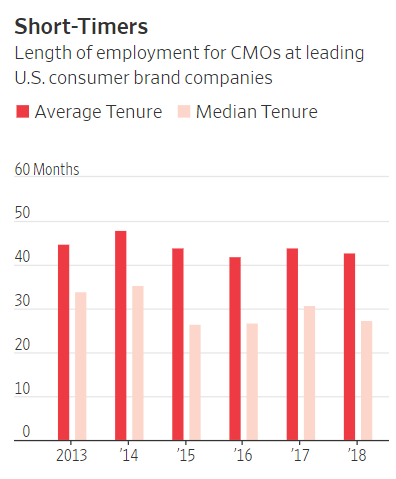
The average tenure of the CMO has declined to just 43 months. Image courtesy WSJ
Digital transformation and changing expectations for CX
What’s causing such change and uncertainty? Business leaders are feeling the growing pains of digital transformation, which has caused seismic shocks to organizations in terms of people, processes, and, of course, technology. Businesses are frantically chasing transformation to keep up with the expectations of customers...which have never been higher.
Both consumer and business customers are less loyal to brands, have shorter attention spans, and demand a superior customer experience (CX): one personalized to their needs and remembers their preferences. And if they can’t get what they want from their current brand, 76% of customers say they’ll be happy to switch to a different one.
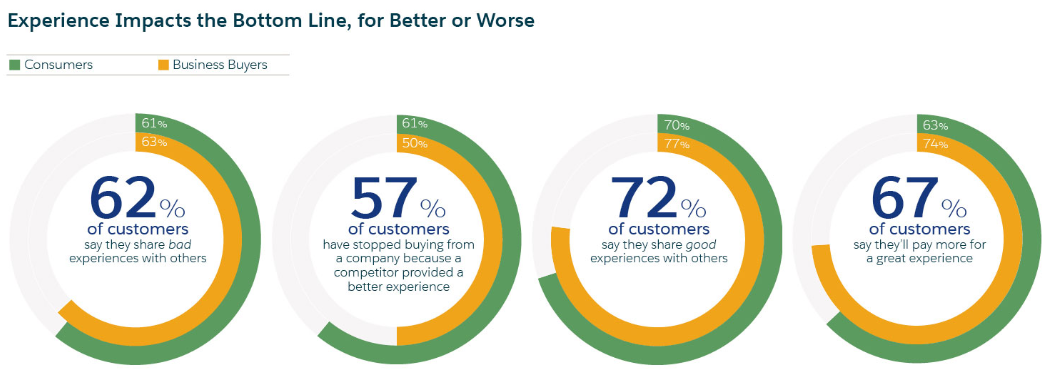
The majority of both consumer and business buyers demand superior CX. Image courtesy Salesforce
How the SaaS explosion is causing unexpected pain for businesses
In practice, customer experience is the real future of work, particularly for revenue teams. The need to offer a cohesive and high-quality customer experience is driving organizations to operationalize CX - to create a personalized experience that accounts for every touchpoint in the customer buying journey.
You already know what successful CX looks like as a customer - think consumer-like experiences such as shopping at Amazon - keeping track of your purchase history, preferences, and serving up relevant recommendations based on your profile and interests. (You also know what CX failures look like. Receiving impersonal, top-of-funnel messaging even after becoming a customer. Receiving recommendations for something you’ve already purchased. Among others.)
But at the risk of stating the obvious, providing superior CX at scale for thousands, if not millions, of customers isn’t something you take care of with a few interns doing manual work over the summer. It’s a monumental task that requires:
People: Outstanding teams with technical know-how
Processes: The orchestration sophisticated, optimized processes
Technology: An increasingly large and complicated suite of technological solutions to manage titanic amounts of data
Automation: To make complex processes repeatable at scale
...Which sounds like a tough job, but something that should be doable with the right hires, proper alignment, and enough budget. Right?
What may not be obvious is how the tech stack itself - which should be the enabler of CX - is increasingly becoming a painful obstacle. But why would technology itself be so painful for businesses?
The answer is surprisingly simple: Because there’s too much of it.
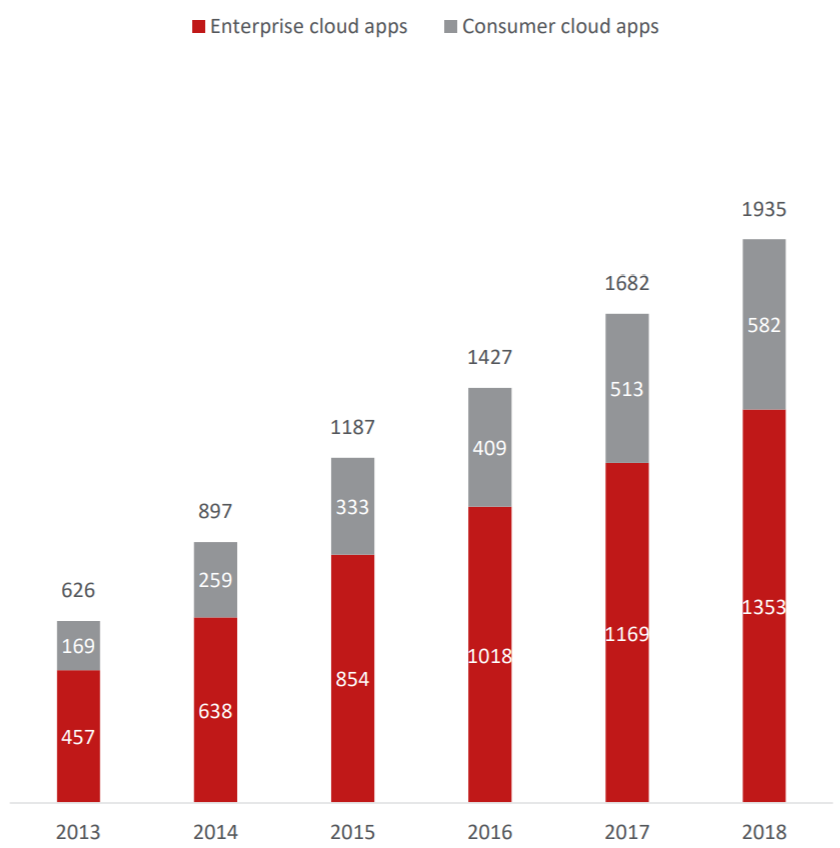
Enterprises use close to 2,000 applications and counting. Image courtesy McAfee
Enterprise firms have tripled the number of software applications they utilize. They now use in excess of 1,935 on average within the last five years. The democratization of software development has drastically lowered the barrier to entry for new software products to hit the market, and businesses can’t seem to stop buying new software. Returning to the example of the CMO, Gartner Research reports that technology continues to be the single highest expenditure in total marketing budget at 29% - more than talent, more than ad spend, more than agencies.
Here’s the challenge - while businesses rapidly adopt more and more new software to accomplish their digital transformation goals, they’re hitting a wall in terms of implementation and ROI. Companies’ unprecedented investment into new technology is leading to equally unprecedented barriers: 59% of firms see implementation of new tech and systems as one of their biggest challenges. In contrast, 68% remain concerned with formulating a successful new go-to-market (GTM) strategy with their shiny new toys.
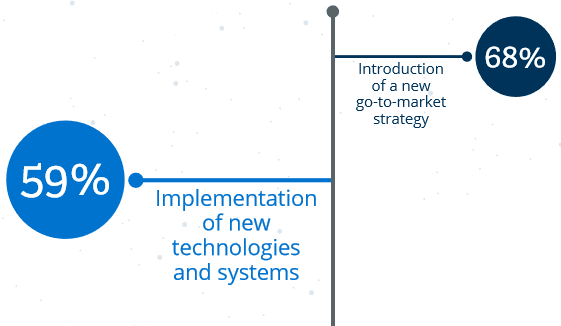
59% of B2B firms struggle with implementing new tech. 68% struggle to incorporate new tech into a GTM strategy. Image courtesy Sirius Decisions.
The hidden pain of implementation: Integrations
Implementation is especially painful due to lack of integrations - the software-level connections that let software applications to talk to each other and seamlessly pass those enormous amounts of customer data quickly and reliably to provide personalization at scale. Sadly, out-of-the-box integrations don’t always exist for Software A and Software B, and when they do, they lack the custom functionality your teams need to execute on world-class CX campaigns.
The traditional fallback for integrations is to build them in-house using your company’s IT resources, but these are extraordinarily hard to come by. IT teams tend to have a full workflow that includes a variety of projects, including InfoSec, privacy, cloud migrations, and of course, product development. Strategically, every company would prefer to allocate 100% of its IT resources into building better, market-leading products. Realistically, the #1 challenge IT continues to face is capacity.
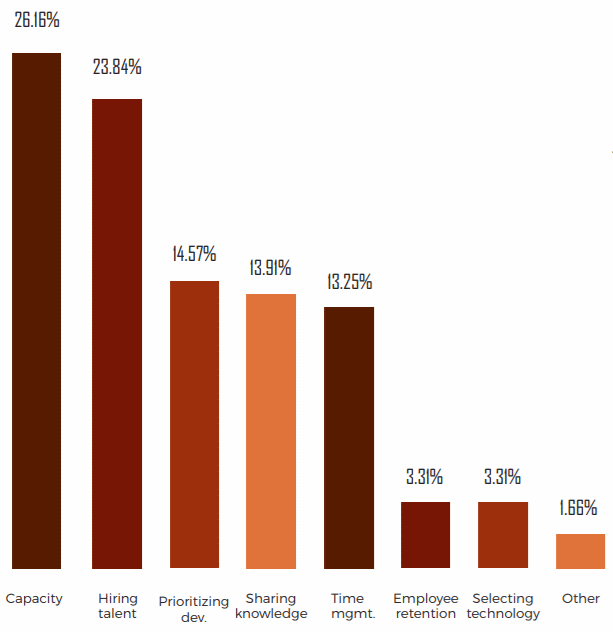
The #1 challenge for any IT organization is still capacity. Image courtesy CodingSans
How business leaders can prepare for the future of work
While the future of work for revenue professionals is providing an outstanding customer experience, the future of work for business leaders must be solving the challenge of the tech stack for their teams:
People: Technology management is going beyond traditional ownership and into the hands of line-of-business users. Learn how revenue professionals in marketing, sales, and customer success are taking control of their tech stacks, and their destiny, in the emerging revenue operations role, which combines line-of-business proximity to projects with technical software management.
Process: Properly empowered line-of-business users drive smarter revenue alignment processes for acquiring, implementing, and driving adoption for business technology to ensure their organizations get real ROI from every purchase.
Technology: Smart companies are taming their tech stacks by implementing both integration and automation into their strategy. Historically, integration tool sprawl made connecting a tech stack to orchestrate mission-critical processes extraordinarily challenging and expensive. Now, smart companies use low-code automation platforms to both connect their tech stacks and automate processes via line-of-business teams, without the need for IT resources.
Learn how leading firms such as AdRoll and Jellyvision incorporate this new technology into their GTM strategy to streamline their lead lifecycle processes and boost revenue.